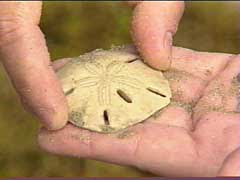Wildlife/Recreation: Who Owned That Shell?
Wednesday, October 24th, 2012Spirula Shell from animaladay.blogspot.com
Passport to Texas with support from the WSFR Program
Before you sell seashells by the seashore, you first have to find them. Surprisingly, summer beachcombing may not yield the results you desire.
03—I feel the best time to go shelling is in the wintertime.
Paul Hammerschmidt, with coastal fisheries, is a lifelong and—admittedly obsessive—shell collector. He says winter storms churn up the Gulf bottom, sending marine critters and their calciferous containments onto the beach. To improve your chances of finding a variety of intact shells, Hammerschmidt says stay clear of crowded beaches.
12—If you get a chance to go to some more isolated beaches, like down on Padres island, or something like that, where the population of humans is not quite so thick, you’ll have a much better chance of finding some really unusual shells.
Such as a pretty little shell called baby ears—which looks like…well…baby ears. Or, there’s another special shell worth searching for called spirula.
19—And it’s a coiled, snail-like shell. But it doesn’t belong to a snail—it belongs to a little squid. And it’s inside the squid, and when the squid dies, that little thing has a lot of chambers in it with gas, and it floats and washes up on the beach. Those are very pretty, bright white, and they’re very fragile, so you have to be careful with them.
This winter, instead of heading to the slopes for skiing, head to the beach for shelling…you can still have hot cocoa when you’re done.
That’s our show for today…remember: life’s better outside…For Texas Parks and Wildlife…I’m Cecilia Nasti.






 Passport to Texas is a
Passport to Texas is a  Passport to Texas is made available by:
Passport to Texas is made available by: